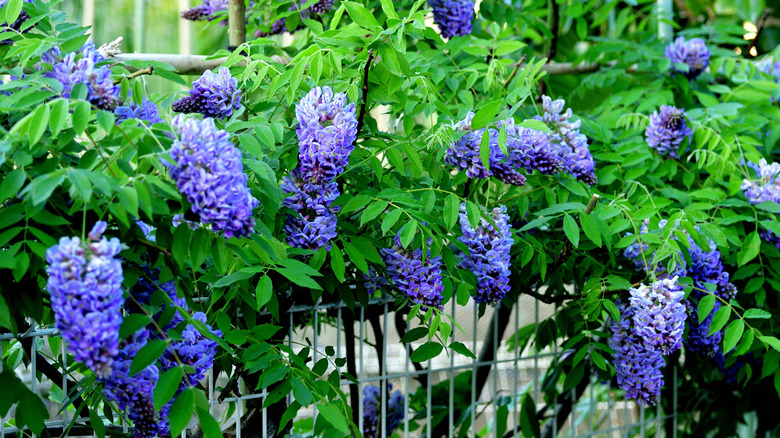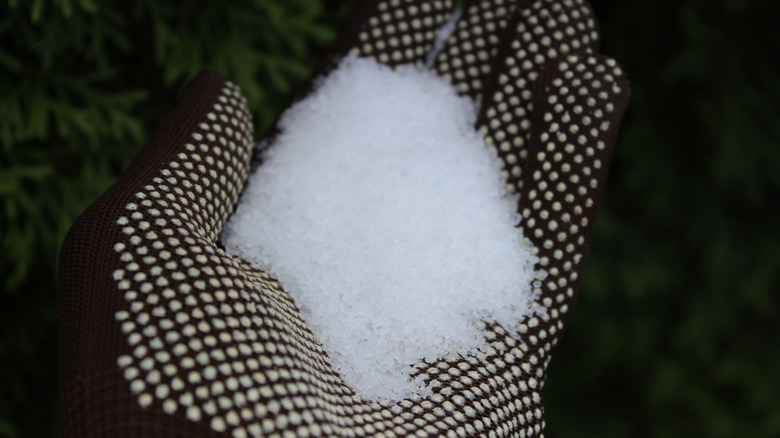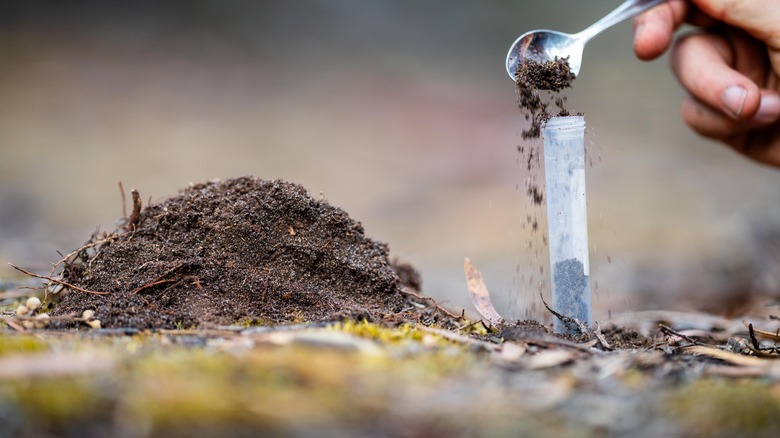If Your Native Wisteria Isn't Blooming, This Household Staple Can Help It Thrive
Wisteria is a flowering woody vine best known for its sweet-smelling clusters of purple blooms, so if you added this plant to your landscape but it's not blooming, that can be a huge disappointment. Luckily, you may have one ingredient to help solve this problem in your cabinet right now: Epsom salt. This product has some of the nutrients wisteria needs to blossom. That said, you should first make sure the wisteria you are encouraging to bloom is a non-invasive species. Master Gardener Tiffany Selvey, House Digest's Gardening Editor, explains "The blooms from these invasive wisteria plants turn into seed pods which burst open, spreading the seeds several feet or further from the parent plant."
Driving through the Southeast, you'll notice purple pops of color peppering the landscape. Those wisteria are likely either Chinese wisteria (Wisteria sinensis) or Japanese wisteria (Wisteria floribunda). These aggressive vines can take over your whole yard, smothering trees and plants as they grow. If you find it in your yard, rest assured there are ways to remove this invasive wisteria plant from your garden. But it's best to steer clear of these species altogether. Instead, you want to introduce native American wisteria (Wisteria frutescens). Once you're sure you have the right kind of plant, you want it to bloom! That's where Epsom salt can help come to the rescue.
Look in your kitchen or bathroom cabinets
American wisteria grows best in zones 5 to 9 in moist but well-drained soil. In order to help your vine produce the most flowers, plant them in full sun and apply fertilizer with high phosphorus when spring arrives. If you've done everything right and still don't see flowers, Epsom salt could add the building blocks your plant needs. That's because the product contains magnesium and sulfur, which flowering plants need to thrive. In particular, the magnesium helps your plant photosynthesize, and the sulfur assists in its growth and development.
That said, the ingredients that make up Epsom salt aren't only useful in the garden or on flowers. In fact, you can use Epsom salt in many places around your house, so it's a good idea to keep it handy. But, if you're wondering how much of the product to add that will encourage bountiful blooms, that depends on the current nutritional makeup of your soil.
Testing your soil
The first step in making sure you have the right soil conditions for your native wisteria is checking your pH levels. American wisteria likes slightly acidic soil, which ranges between a pH level of 5.5 and 6.5. Either make a DIY test to check its health, buy a kit, or contact your local extension service for a soil test. These tests not only tell you how acidic your soil is, but will help you make sure your soil contains the proper nutrients for your wisteria to thrive. This includes the magnesium and sulfur Epsom salt can provide. Taking these steps will help you determine the kind of environment you are providing to maintain a healthy garden and keep your plants blooming. Once you know, you can make the necessary adjustments.
If you find that your soil lacks magnesium and sulfur, Epsom salts could be a solution to encourage your American wisteria to bloom. Try adding about a ½ cup of the product to the soil at the base of your vines and see how that affects your plant. The good news is that you can't overdo it because Epsom salts won't remain in the ground or accumulate over time. Once you observe the effects, adjust as needed.


